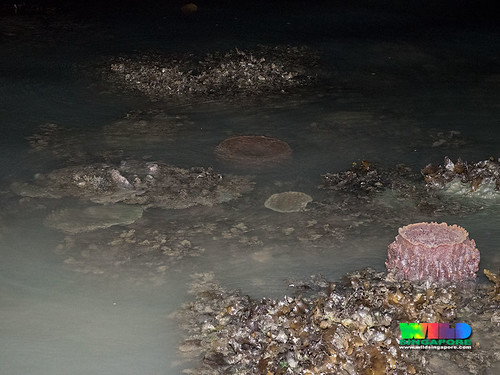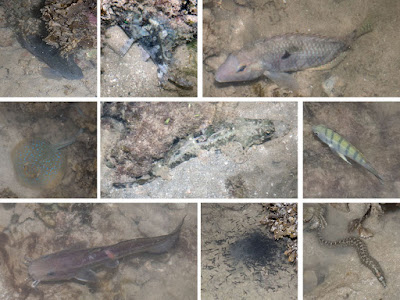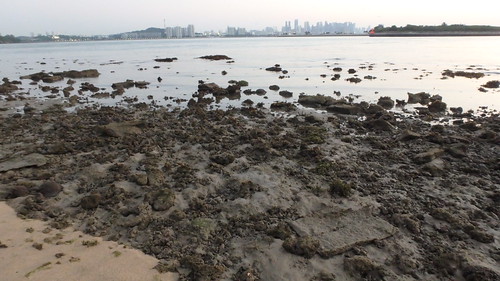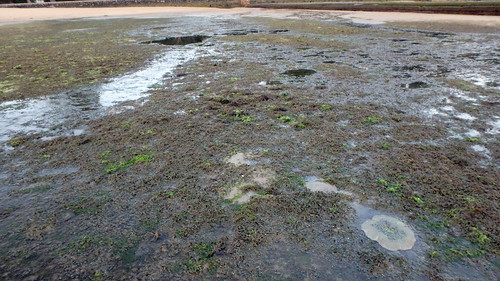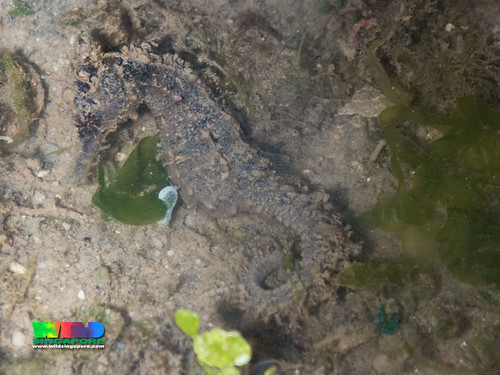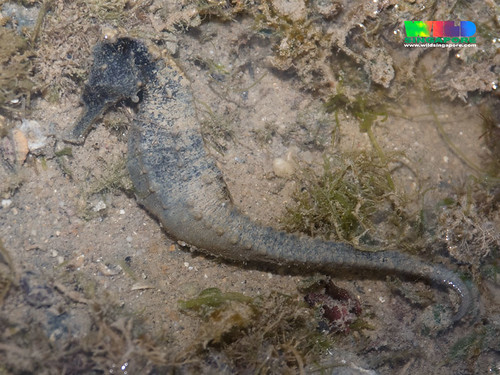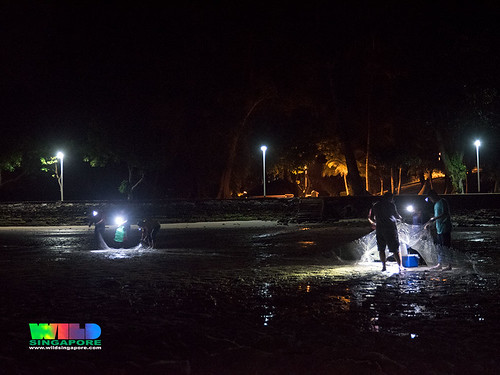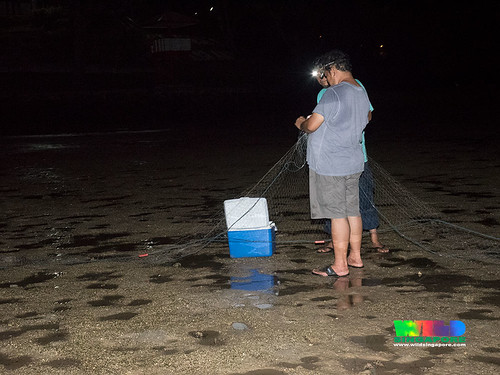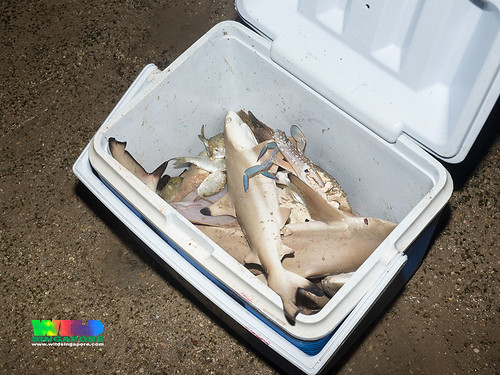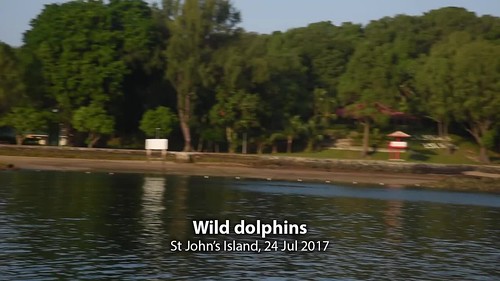Sadly, we also saw men with a long fish net in the lagoon which had trapped sharks. Also, all the Tape seagrasses were cropped, and the corals on the shore don't appear to be recovering well from mass coral bleaching.
I surveyed this shore at the height of mass coral bleaching in July 2016 where I estimate about 80% of the hard corals and 50% of the leathery soft corals are bleaching, and 10-20% of the corals have died recently. We visited again in Dec 2016 during an evening tide that was not very low and when the Sargassum was in bloom, so I couldn't really see how the shore was doing.

Most of the corals I saw were boulder shaped. There were also many small Barrel sponges, but not many other sponges.
Most of the Boulder pore corals were nice and brown. I saw a few that were pale or oddly coloured.
There were not many Anemone corals and some colonies were mostly dead. The Small goniopora coral colonies I saw were mostly alright although pale.
I saw several Pebble corals of various colours. One was very pale.
Merulinid corals (formerly Family Faviidae) were common, most seemed alright though many were neon shades.
There were many small to large colonies of Flowery disk corals. About half were pale or oddly coloured.
There were also some Thin disk corals. They all appeared fine, although one had yellowish patches.
There were many large colonies of other kinds of Disk corals on the reef edge. They seemed alright.
I saw corals that I usually see in silty northern shores: Zebra coral, Pock-marked coral. Also Tiny ring coral, and one Tongue mushroom coral. I did not see any Cauliflower coral, Sandpaper coral or Galaxy coral.
I saw a few Leathery soft corals of various kinds. Most were alright except for one colony that had 'peeling' skin. I saw a few small colonies of Sea mat zoanthids, they were not bleaching.
I saw two Giant carpet anemones. One had 4 anemonefishes in various sizes from large to small. The one with fishes looked a little bleachy. Oh dear. Anemonefishes can't survive without their anemone home to protect them.
Among the other animals I saw was a small Reef octopus, several large Spangled flatworms, one Spider conch, many small Brown egg crabs. I only saw one Long black sea cucumber.
There were many fishes of all kinds among the rubble: False scorpionfish, Long-spined waspfish, Blue-spotted fantail ray, Fringe-eyed flathead, Bengal sergeant and Eeltailed catfishes, Carpet eel-blenny. I saw Shadow gobies and filefish too.
Sadly, there doesn't appear to be many live corals on the reef flat.
Alas, all the Tape seagrass clumps were cropped short. The lush spoon seagrasses just at the entrance to the natural rocky shore seemed to have disappeared.
This is what it looked like on our last survey in Dec 2016.

On the seagrass, Niv found a tiny Knobbly sea star. There were also some Clear sundial snails, and a few small Garlic bread sea cucumbers. In the sandy lagoon, there were some Common sea stars.
I saw many Haddon's carpet anemones. Two had anemoneshrimps. About one-third of the anemones were pale or bleachy looking. I only saw one Frilly sea anemone and it was very pale.
We first saw this seahorse curled around a Slender sea pen.
Then we saw her husband. Papa seahorses are almost always pregnant. I think these are Estuarine sea horses.
When we arrived at about 5.30am, there were people working in the lagoon. I said hello to them. They were untangling the fishes caught in the long net they laid in the lagoon.
They were quite friendly and seemed excited by the fishes they caught.
I asked if they would leave the net on the shore, they said they would not.
They let me have a look at what they caught. It included large Flower crabs, and 2 small Black tipped reef sharks. Another was added to the cooler while I was there. Later on, I heard them settle in the shelter near the natural rocky shore.
From Google Earth, the net was probably about 100m long. They did indeed remove the net as I didn't see it on my way back after the survey.
Just as we left St John's jetty, Encik Rais our skipper, stopped the boat and pointed out dolphins! He says there were two, probably a mama and her baby. He patiently let us film themr. We saw a dolphin (or two?) moving along the shoreline of St John's.
Wayne has a much better clip than me.
Dolphins are regularly reported at St John's Island. But this is my first time seeing them for myself. I do hope the dolphins don't get caught in fishing nets. Dolphins breathe air and will drown if they are trapped.
Photos by others on this trip
Others on this trip: Wayne Tan, Niv.


